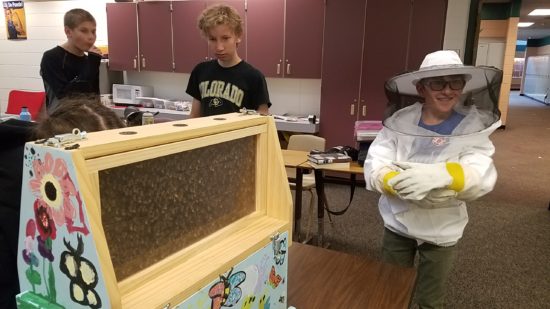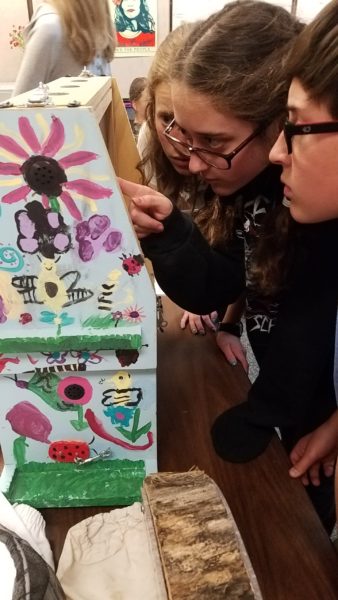
First the students learned about all different types of pollinators: flies, butterflies and moths, bats, and bees. They researched what pollinates their favorite foods. Did you know that flies pollinate chocolate? Then they found out what, if anything, was threatening the pollinators. They decided that they were most interested in taking action to protect bees. They learned about colony collapse and about the role neonicotinoids are playing in the demise of the bees. Neonicotinoids can even be present in plants we plant intending to help bees! We had a beekeeper come in with a hive full of bee and she gave us lots of ideas about how to help them. She also let them know that her bees are usually free to come and go as they please, they like living in her hives, so they don’t actually need to be freed.

Written by CAP Instructor Erin Angel
See more photos from the project here!
The Community Adventure Program at Angevine Middle School is made possible through the Nature Kids/Jovenes de la Naturaleza program. Click here to learn more!
Many thanks to Great Outdoors Colorado (GOCO), The Larrk Foundation, PeyBack Foundation, our donors, and our partners for making this program possible.

Leave a Reply